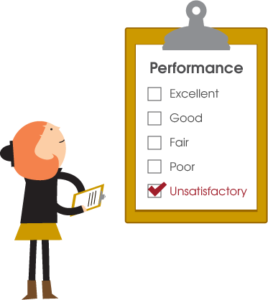“Custom” gives us a competitive edge. It’s essential for getting ahead, yet it often ends up holding us back.
Over the years of working with web businesses (including a few of my own), I’ve seen businesses that have become almost crippled by historical decisions to go “custom”.
Here are a few example scenarios where “custom” can really cost.
The beautiful design vs the dull flexible one
We are often told that a picture is worth a thousand words, but I don’t remember ever being warned that pictures also cost more than a thousand words.
The process of getting words onto a website is generally much easier than getting custom graphics or even photographs onto a website.
This morning I decided to write this post (the idea was triggered by a mild panic about the amount of effort we are investing in making our forthcoming website beautiful). 3 hours later. Job done.
Had I decided I wanted a custom graphic I’d have had to brief our designer and fit it into their schedule (she’s booked out for the next three weeks). There’d likely be several iterations and my thoughts would evolve over that time so I’d ask for further changes. It wouldn’t surprise me if something more important came up and the post would never have been completed.
Of course, if I was a graphic designer then I could get the graphic out in the same time it took me to write the post. However unlike my post, I’d probably be the only one able to change and evolve it. That’s not a massive deal with a blog post, but it really is when it comes to the main pages of your website as they need to evolve over time.
Beautifying a website is not just about graphic files. It involves code, it needs to fit with the marketing flow of the site and accurately reflect the business. Perhaps it also involves compliance and SEO input. You can quickly see how five or more people will need to get involved (designer, coder, business leader, SEO consultant, UX designer, compliance officer etc etc) and every time you want to make a change you need to reconvene most of that team.
If that change was just a case of changing text though, the change can often be done on the spur of the moment by one person at a fraction of the cost, and most importantly at a cost that doesn’t require a tedious sign-off process. So no department head or finance team to add another two or three people to our list of six or so!
So it’s not just the cost of the initial customisation, it’s the cost of change and the resultant lost opportunity of not making that said change.
Amazon and eBay are the leading protagonists of the “simple design” approach and its no accident that they also lead the field in continuous improvement through testing: they achieve competitive advantage through constant evolution rather than perceived face-value beauty.
The cost per iteration with “beautiful” is much much higher. Testing, therefore, will not get into the DNA of the business. Indeed, the reality that a design might fail is simply swept under the carpet.
Over the years, I have moved from believing that “ugly sells” to a much greater appreciation of the value of design. Which is why I’m currently pre-occupied with making our forthcoming website beautiful. Beauty is a good thing, but it needs care. My motive for writing this post is to remind myself to keep that beauty as simple, flexible and repeatable as practical.
The SEO fix vs accepting the flaws
One area we have a lot of experience in is resolving technical SEO issues. I remember specifying a set of changes for one website that was being built on an up and coming e-commerce platform.
We specified fixes, the fixes were made, but the fixes didn’t play nicely with the system which illustrates another risk of bespoke: the unforeseen immediate complications. Then every time there was a major development upgrade there were further problems: the unforeseen future complications.
It reached a point where we decided that living with the SEO flaws outweighed the benefits of the custom fix. An important lesson learned. We are now much more careful about working within limitations of systems unless we can influence the direction of the system itself or at least the developer’s standard install (rather than just the clients install of a system). This is an atempt to make the cost of the maintenance of the improvement less likely to be on the shoulders of one client.
The cloud-based industry solution vs the bespoke business system
Functionality customisations come large and small. Even small ones have costs as illustrated by the above SEO example, but most businesses will at some point face the decision of custom versus bespoke for major business systems. In some cases, that system might actually be the business and this is where there is a real temptation to go down the bespoke route.
Let’s say you are a wine merchant. You realise that the traditional model of selling wine in your local community is majorly threatened. You decide you need to change your business to adapt to this. Selling on the internet is likely to be part of that solution. You search the net and find a system designed specifically for wine merchants. You review it and find it falls short on one feature you deem key. So you decide to go down a bespoke route.
I’ve seen more than one business fail because of such a decision. Meanwhile the wine merchant* that learned to live with the off the shelf solution has the time to focus on customer service, sourcing better wine and marketing. The lack of flexibility in the system actually gave them more flexibility in their business.
*although not wine merchants, this is something I’ve seen with four competitors in one industry. Two took the off the shelf cloud based system. Two went down the bespoke route. The first two are growing, the other two are stagnating.
The lesson?
When making decisions about customisation, don’t just consider the cost of the customisation, factor in the compounding costs of maintenance and impact on change as well. If you are going down the bespoke route accept that you are being ambitious and that the rest of the business plan needs to match that ambition.
What experiences have you had with customisation? I suspect that this is a principal that is equally applicable to business in general rather than just websites?




